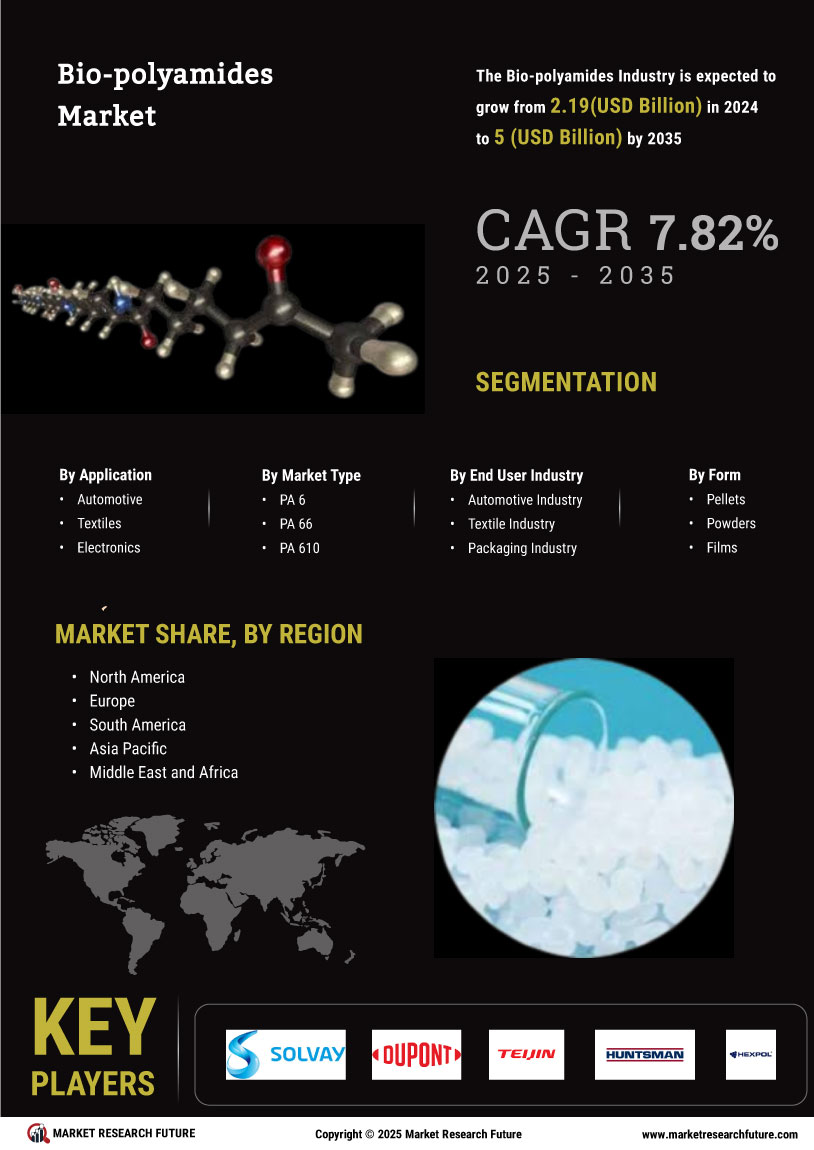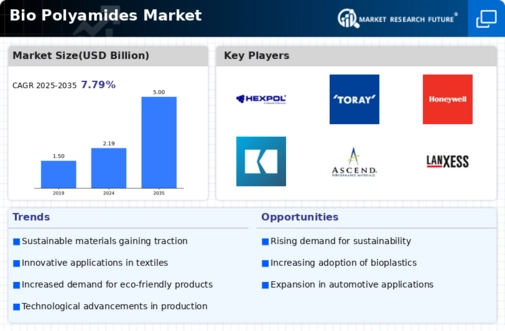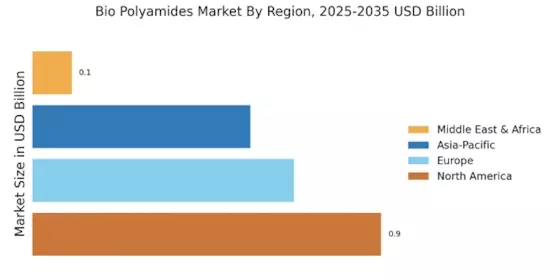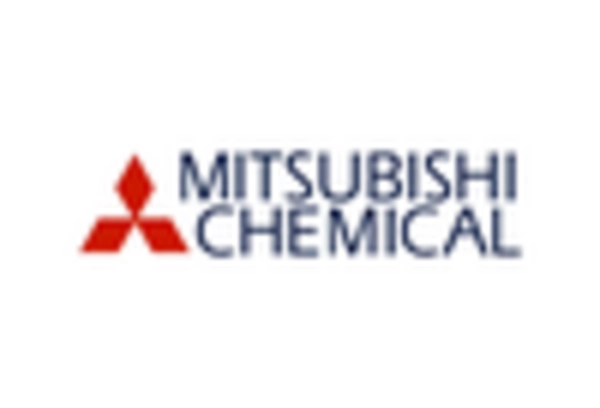Bio Polyamide Market Summary
As per Market Research Future analysis, the Bio Polyamides Market Size was estimated at 2.19 USD Billion in 2024. The Bio Polyamides industry is projected to grow from 2.361 USD Billion in 2025 to 4.998 USD Billion by 2035, exhibiting a compound annual growth rate (CAGR) of 7.79% during the forecast period 2025 - 2035
Key Market Trends & Highlights
The Bio Polyamides Market is experiencing robust growth driven by sustainability and technological advancements.
- North America remains the largest market for bio polyamides, reflecting a strong commitment to sustainability initiatives.
- Asia-Pacific is identified as the fastest-growing region, propelled by increasing demand for eco-friendly materials.
- The automotive sector continues to dominate the market, while the textiles segment is rapidly expanding due to innovative applications.
- Key market drivers include sustainability initiatives and technological innovations, particularly in the PA 66 and PA 610 segments.
Market Size & Forecast
| 2024 Market Size | 2.19 (USD Billion) |
| 2035 Market Size | 4.998 (USD Billion) |
| CAGR (2025 - 2035) | 7.79% |
Major Players
BASF SE (DE), DuPont de Nemours Inc (US), Evonik Industries AG (DE), Mitsubishi Chemical Corporation (JP), Arkema SA (FR), Solvay SA (BE), Huntsman Corporation (US), Nexeo Solutions (US), Toray Industries Inc (JP)


















Leave a Comment